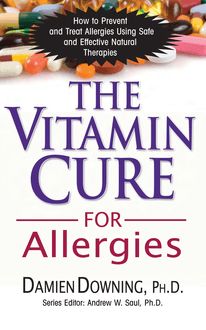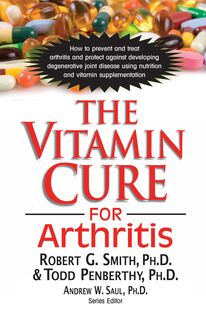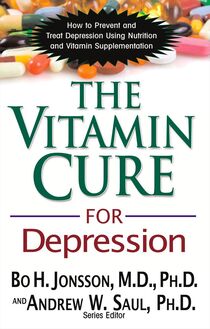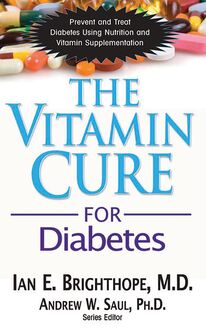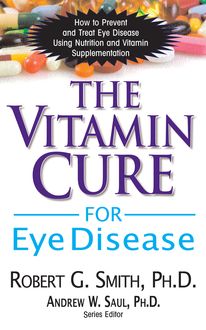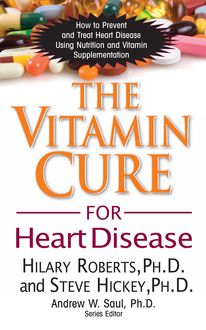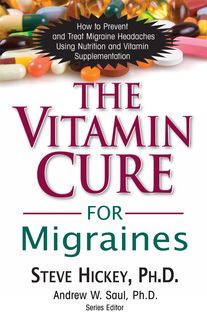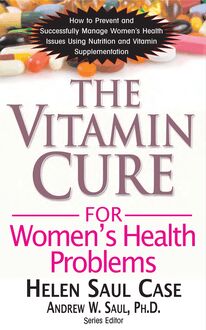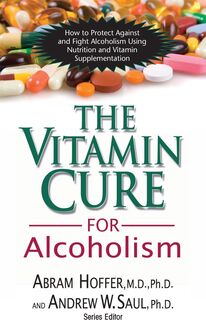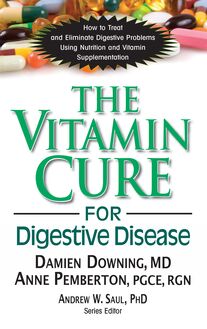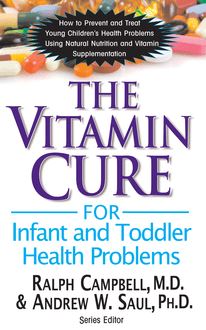-
 Univers
Univers
-
 Ebooks
Ebooks
-
 Livres audio
Livres audio
-
 Presse
Presse
-
 Podcasts
Podcasts
-
 BD
BD
-
 Documents
Documents
-
- Cours
- Révisions
- Ressources pédagogiques
- Sciences de l’éducation
- Manuels scolaires
- Langues
- Travaux de classe
- Annales de BEP
- Etudes supérieures
- Maternelle et primaire
- Fiches de lecture
- Orientation scolaire
- Méthodologie
- Corrigés de devoir
- Annales d’examens et concours
- Annales du bac
- Annales du brevet
- Rapports de stage
La lecture à portée de main
Vous pourrez modifier la taille du texte de cet ouvrage
Découvre YouScribe en t'inscrivant gratuitement
Je m'inscrisThe Vitamin Cure for Heart Disease , livre ebook
Découvre YouScribe en t'inscrivant gratuitement
Je m'inscrisEn savoir plus
Vous pourrez modifier la taille du texte de cet ouvrage
En savoir plus

Description
Sujets
Informations
| Publié par | Turner Publishing Company |
| Date de parution | 15 mai 2011 |
| Nombre de lectures | 0 |
| EAN13 | 9781591203261 |
| Langue | English |
| Poids de l'ouvrage | 1 Mo |
Informations légales : prix de location à la page 0,0748€. Cette information est donnée uniquement à titre indicatif conformément à la législation en vigueur.
Extrait
THE V ITAMIN C URE
for Heart Disease
H ILARY R OBERTS , P H .D. S TEVE H ICKEY , P H .D.
The information contained in this book is based upon the research and personal and professional experiences of the authors. It is not intended as a substitute for consulting with your physician or other healthcare provider. Any attempt to diagnose and treat an illness should be done under the direction of a healthcare professional.
The publisher does not advocate the use of any particular healthcare protocol but believes the information in this book should be available to the public. The publisher and authors are not responsible for any adverse effects or consequences resulting from the use of the suggestions, preparations, or procedures discussed in this book. Should the reader have any questions concerning the appropriateness of any procedures or preparation mentioned, the authors and the publisher strongly suggest consulting a professional healthcare advisor.
Basic Health Publications, Inc. 28812 Top of the World Drive Laguna Beach, CA 92651 949–715-7327 • www.basichealthpub.com
Library of Congress Cataloging-in-Publication Data
Roberts, Hilary.
The vitamin cure for heart disease / Hilary Roberts, Steve Hickey.
p. cm.
Includes bibliographical references and index.
ISBN 978–1-59120–264-6
1. Heart—Diseases—Alternative treatment. 2. Heart—Diseases—Diet therapy.
3. Heart—Diseases—Prevention. 4. Vitamin therapy. I. Hickey, Steve II. Title.
RC681.R63 2011
616.1'2306—dc23
2011027746
Copyright © 2011 Hilary Roberts, Ph.D. and Steve Hickey, Ph.D.
All rights reserved. No part of this publication may be reproduced, stored in a retrieval system, or transmitted, in any form or by any means, electronic, mechanical, photocopying, recording, or otherwise, without the prior written consent of the copyright owner.
Editor: John Anderson Copyeditor: Peggy Hahn Typesetting/Book design: Gary A. Rosenberg Cover design: Mike Stromberg
Printed in the United States of America
10 9 8 7 6 5 4 3 2 1
C ONTENTS
Acknowledgments
Preface
CHAPTER 1 The Number One Killer
CHAPTER 2 The Heart and Cardiovascular System
CHAPTER 3 Atherosclerosis
CHAPTER 4 A Big Fat Lie
CHAPTER 5 Sweet but Deadly
CHAPTER 6 Risk Factors and Inflammation
CHAPTER 7 Overlooked Evidence
CHAPTER 8 Quenching the Fire
CHAPTER 9 An Infectious Disease?
CHAPTER 10 Linus Pauling and Vitamin C
CHAPTER 11 Vitamin E
CHAPTER 12 No More Fear
CONCLUSION Demand Good Health
References
About the Authors
A CKNOWLEDGMENTS
We would like to thank all those who have encouraged us in this work. Dr. Abram Hoffer helped create a better understanding of nutritional medicine. On this side of the Atlantic, Dr. Damien Downing, of the British Society for Ecological Medicine, has been equally helpful. Gert Schuitemaker and Elsedien de Groot have strived tirelessly to promote orthomolecular medicine in Europe. We have also welcomed the support of Dr. Atsuo Yanagisawa, a pioneer of the use of vitamin C therapy in Japan.
Bill Sardi sends frequent emails detailing developments in orthomolecular medicine, particularly vitamin C. He shows a high degree of sophistication in selecting critical papers of interest. Owen Fonorow and the Vitamin C Foundation have kept Linus Pauling’s work on vitamin C and heart disease in the public eye. A stimulus for our work has been discussions with Dr. Michael Gonzales and Dr. Jorge Miranda-Massari. We would like to thank Hilary’s father, Michael Roberts, a retired consultant surgeon, who discussed the conventional viewpoint with us. We are also grateful to Fiona Roberts, and to Eileen and George Fondis, for the generous loan of their computers. The macrophage cartoon is copyright by Dr Mikael Nicu of the University of Helsinki reproduced with permission.
In particular, we would like to thank Dr. Jim Jackson for his outstanding work in nutrition. His research has changed the way nutrients are viewed by the current generation of scientists.
P REFACE
A major aim of this book is not to offer medical advice but to provide a context for future research in atherosclerosis. The authors disclaim any responsibility for use of the information contained within for any purpose, including self-medication or nutrition. We do not wish to promote any therapy, or to encourage individuals to use the information in this book to go against the advice of their physician. People electing to self-treat do so at their own risk. Of course, patients may choose to bring the book to the attention of their physicians in order to help them demand appropriate treatment.
The book aims to be accessible to readers who, though intelligent, may have little knowledge of biology, chemistry, or medicine. This involves some simplification, although we have tried to avoid being inaccurate. For example, we have not differentiated between risk factors and risk markers; this slight loss of subtlety increases the readability. Readers who lack a formal scientific education can ignore the references. If the text becomes difficult because of biochemical words or jargon, please read on—these details are not pertinent to the overall story. As far as possible, we have tried to exclude jargon.
Physicians and biological scientists should find the book an easy read. We have included references for the benefit of readers who wish to follow up on the ideas presented. Often, we have cited one example, where others might have been equally valid. References indicate additional sources of information rather than specific justification for points. In some cases, the reference provides an alternative explanation for the point being made. However, it should be possible to validate any of the scientific statements by following the references or by an elementary Internet or library search.
CHAPTER 1
T HE N UMBER O NE K ILLER
“A great doctor kills more people than a great general.”
—G OTTFRIED W ILHELM L EIBNIZ (1646–1716)
T his book is about heart disease and related conditions, such as vascular disease, stroke, and diabetes. It explains the cause of the disease and how to keep your cardiovascular system healthy. Currently, people with heart disease are told there is no cure, and that their only choices are surgery and long-term treatment with drugs. This book provides another option. Atherosclerosis, the ultimate cause of most cardiovascular disease, is both preventable and reversible. We explain how simple supplements can prevent the disease and return a sufferer to good health.
Despite millions of dollars spent on research, heart disease remains one of the main causes of death in the Western world. Around the world, about three in ten people (29 percent) die of cardiovascular disease. 1 Slightly more people die from heart disease than from stroke: heart disease is the single biggest killer in the West, with stroke in third place. One in eight adults in the United States has been diagnosed with heart disease. On average, one American dies of cardiovascular disease every minute, so someone in the U.S. has probably succumbed to the disease since you started reading this chapter.
People are so used to this situation that perhaps heart disease seems inevitable, but it is not. The epidemic of heart disease is a modern phenomenon. We have written this book for people who want to reduce their risk of becoming a heart disease statistic. In particular, the book focuses on alternatives to conventional approaches for prevention and treatment of these disorders, including dietary changes and food supplements. In order to understand how these might work, we first describe the development of cardiovascular disease and how this is influenced by nutritional and lifestyle choices.
Awareness of the disease mechanisms suggests methods for direct intervention and prevention. Prevailing ideas on heart disease are often misguided, so what you read may surprise you. For example, experts attribute the disease to “risk factors,” which have become part of popular culture. Cardiologists assert that “we now have overwhelming evidence that high cholesterol causes coronary disease.” 2 However, when asked, these doctors have failed to produce the research paper that demonstrates how cholesterol is so harmful. Other doctors claim that there is no single cause. 3 Such multi-factorial explanations are a way of disguising ignorance. We are interested in direct causative explanations, not loose statistical associations.
This book explains the underlying causes of atherosclerosis and its deadly results, including heart attack, stroke, and aneurism. Cardiovascular diseases are caused by inflammation and oxidation in the walls of arteries; this has been known for decades, but conventional medicine has apparently failed to understand the implications of this fact. The myths have entered popular culture—a television soap opera character warns against the dangers of cholesterol, while snatching a delicious bacon and egg breakfast from under the nose of a crestfallen victim. In the popular imagination, though rarely discouraged by the medical profession, this is entirely appropriate, because viewers believe that cholesterol causes heart disease. As we shall see, the evidence does not support this simplistic idea. To understand a problem, it is important to approach it with an open mind. This can be hard, when misinformation floods the media. Despite popular impressions, “risk factors” do not explain heart disease: the links between them and the cause of disease are tenuous. To find out what is really going on, we need to get back to basics.
One reason for medicine’s failure is increasing specialization, as doctors and researchers learn more and more about less and less. Thousands of research papers are published which require the specialist expertise of a particular discipline to appreciate their full meaning. However, medical sc
-
 Univers
Univers
-
 Ebooks
Ebooks
-
 Livres audio
Livres audio
-
 Presse
Presse
-
 Podcasts
Podcasts
-
 BD
BD
-
 Documents
Documents
-
Jeunesse
-
Littérature
-
Ressources professionnelles
-
Santé et bien-être
-
Savoirs
-
Education
-
Loisirs et hobbies
-
Art, musique et cinéma
-
Actualité et débat de société
-
Jeunesse
-
Littérature
-
Ressources professionnelles
-
Santé et bien-être
-
Savoirs
-
Education
-
Loisirs et hobbies
-
Art, musique et cinéma
-
Actualité et débat de société
-
Actualités
-
Lifestyle
-
Presse jeunesse
-
Presse professionnelle
-
Pratique
-
Presse sportive
-
Presse internationale
-
Culture & Médias
-
Action et Aventures
-
Science-fiction et Fantasy
-
Société
-
Jeunesse
-
Littérature
-
Ressources professionnelles
-
Santé et bien-être
-
Savoirs
-
Education
-
Loisirs et hobbies
-
Art, musique et cinéma
-
Actualité et débat de société
- Cours
- Révisions
- Ressources pédagogiques
- Sciences de l’éducation
- Manuels scolaires
- Langues
- Travaux de classe
- Annales de BEP
- Etudes supérieures
- Maternelle et primaire
- Fiches de lecture
- Orientation scolaire
- Méthodologie
- Corrigés de devoir
- Annales d’examens et concours
- Annales du bac
- Annales du brevet
- Rapports de stage
